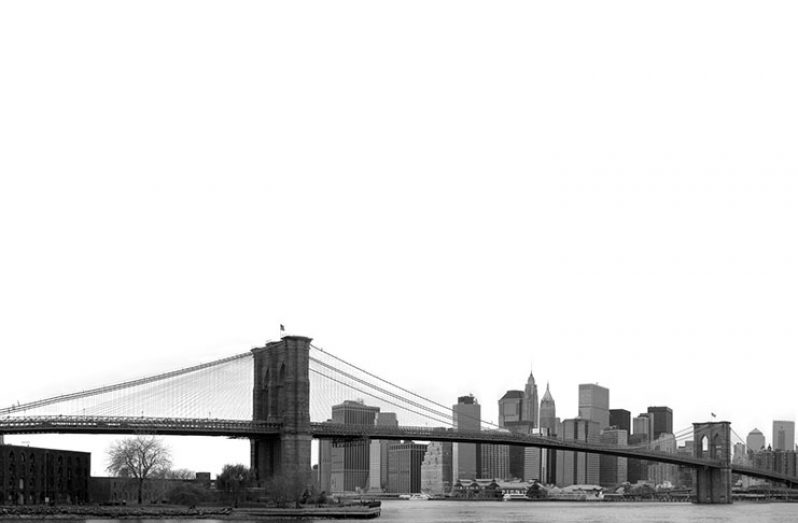– Brodie’s bridge to fame
Steve Brodie saw a way to use the Brooklyn Bridge for self-promotion and did it. It brought him a measure of fame and fortune.
The Brooklyn Bridge is one of the great engineering feats of the 19th century. Opened in 1883, it ranked high among the world’s first great suspension spans. From shore to shore, across the East River, the bridge is 1,091 meters (3,579 feet) long, with the central span 486 meters (1,595 feet).
After completion, the “Great Bridge” connecting downtown Man-hattan (at City Hall) to downtown Brooklyn near Borough Hall was referred to as the “Eighth Wonder of the World.”
On May 19, 1885, two years after completion, Robert Odlum, a physical fitness trainer, jumped off the bridge on a bet. It surprised no one that Odlum died in the attempt. Experts agreed that the odds of anyone surviving the plunge were practically nil.
So when on July 23, 1886, headlines in New York City newspapers announced that Steve Brodie successfully jumped off the bridge for a $100 bet and lived, it was trumpeted as a great story.
However, eyewitnesses claimed they saw him fake the Brooklyn Bridge jump and there was always suspicion that the reports were a hoax. Skeptics said Brodie had a friend toss a dummy off the bridge and that Brodie hid under a nearby pier only to swim out when rescue boats approached the scene.
Steve Brodie, a bookie, gained the publicity he was seeking, and it made him a celebrity. A tavern he opened shortly after in the Bowery became very popular among sightseers.
For a while, he was an exhibit at Alexander’s museum at 347 Bowery, bragging about his exploits. His “permanent exhibit” began in 1890, when he opened a saloon at 114 Bowery.
Hanging on the wall of his saloon was an oil painting of his jump. There was also on display an affidavit from the barge captain who had rescued him.
Brodie’s Bowery saloon-museum made him prosperous. It became a popular tourist attraction. Tour buses stopped there and tour guides described the place as “one of the great historical scenes of the city.”
Brodie also became an actor in several shows, notably playing himself in a touring show called “On the Bowery” in which he recreated his legendary leap on stage.
Brodie’s life gave New York a phrase, at least temporarily. “Pulling (or doing) a brodie” first became slang for a suicidal leap. Later it was used for “a fall, failure, or flop.”
Later, in 1888, when Brodie was said to have repeated the stunt at Poughkeepsie’s Railroad Bridge, only the local paper carried the story of this dubious event.
The old Poughkeepsie Daily Eagle reported in 1888 that Brodie leaped from the bridge, was rescued by some friends in a rowboat, and taken to New York to recover. The Daily Eagle’s successor, The Poughkeepsie Journal, looked back on Thursday, May 9, 1974 and referred to the supposed event as a “death-defying leap by dare devil Steve Brodie in 1888.”
The legend lives on. Brodie had his day in the sun. But many questions remain.



.jpg)









